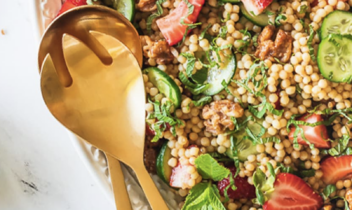Fruits and veg always seem to be grouped together. Are they interchangeable?
Answer
Generally, yes, they are interchangeable. Federal dietary recommendations are to eat ½ your plate as fruits and vegetables, in roughly equal amounts. Most vegetables and fruit are major contributors of a number of nutrients under consumed in the American diet, including folate, magnesium, potassium, dietary fiber, and vitamins A, C, and K, so consuming either fruit or veggies can help make up for this shortfall. Additionally, both fruit and vegetables are associated with reduced risk of many diseases and when prepared without added fats or sugars, are generally low in calories. In this way, fruits and vegetables are generally ‘interchangeable.’ Similarly, fruits and vegetables contain an array of phytochemicals which are also thought to help prevent disease. There are thousands of phytochemicals in produce so eating a wide variety of fruits and vegetables helps assure that you get all the benefits these phytochemicals offer as well. The real key is to eat a variety of fruits and vegetables.


